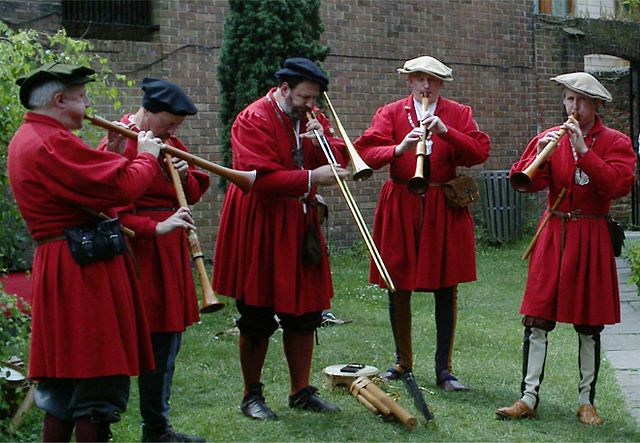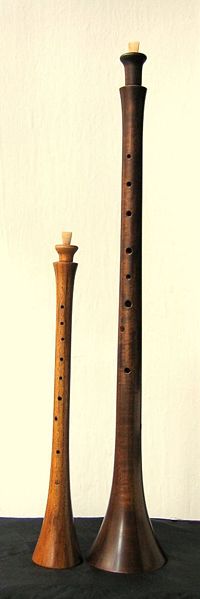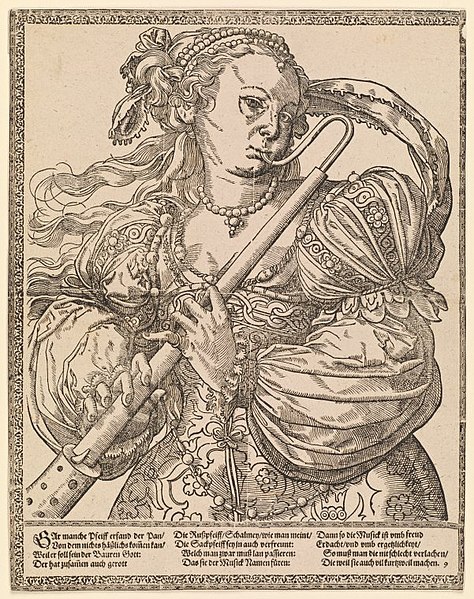An alta cappella or alta musica (Italian), haute musique (French) or just alta was a kind of town wind band found throughout continental Europe from the thirteenth to the eighteenth centuries, which typically consisted of shawms and slide trumpets or sackbuts. Waits is the British equivalent. These were not found anywhere outside of Europe.
Early 17th-century Flemish alta cappella, drawing by Denis van Alsloot. Instruments are (from left to right): a bass dulcian, an alto shawm, a treble cornett, a soprano shawm, a second alto shawm and a tenor sackbut.
A re-created wait in York
Modern reconstruction of a fifteenth-century slide trumpet
Two shawms of the fifteenth-century type
The shawm is a conical bore, double-reed woodwind instrument made in Europe from the 12th century to the present day. It achieved its peak of popularity during the medieval and Renaissance periods, after which it was gradually eclipsed by the oboe family of descendant instruments in classical music. It is likely to have come to Western Europe from the Eastern Mediterranean around the time of the Crusades. Double-reed instruments similar to the shawm were long present in Southern Europe and the East, for instance the ancient Greek, and later Byzantine aulos, the closely related sorna and zurna, and the Armenian duduk.
Shawm
Shepherd playing the shawm (1646), by Jan Baptist Wolffort (Dutch Rijksmuseum)
Woman playing a bass shawm (Tobias Stimmer c. 1500)






